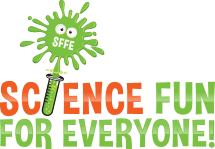Science Fun


What Do Taste Buds Taste Human Body Science Experiment
In this fun and easy human body science experiment, we’re going to explore and investigate taste buds.
- Lemon juice
- Instant coffee
- Six small bowls
- Cotton swabs
- Pen or pencil
- Blank piece of paper
Instructions:
- Draw the shape of your tongue on your piece of paper.
- Fill one of the bowls with water.
- Fill the other bowls with a small amount of salt, sugar, lemon juice, and instant coffee.
- Now, dip a cotton swab into the lemon juice and rub the swab around in your mouth.
- Mark where you tasted the sour taste.
- Next, dip a cotton swab in water and then the sugar. Move the cotton swab around your mouth and mark where you tasted the sweet taste.
- Repeat this procedure with the salt and the coffee.
EXPLORE AWESOME SCIENCE EXPERIMENT VIDEOS!

How it Works:
An average person has around 10,000 taste buds. Taste buds have sensitive microscopic hairs that send messages to the brain. These messages will tell the brain if something is sweet, salty, sour, bitter, or savory. Up until recently, it has been believed that certain areas of the tongue detect certain tastes. This is now considered a misconception. Did you identify similar tastes on certain parts of your tongue?
Make This A Science Project:
Try this experiment with a friend. Try different items to taste.
EXPLORE TONS OF FUN AND EASY SCIENCE EXPERIMENTS!
SUBSCRIBE AND NEVER MISS A NEW SCIENCE FUN VIDEO!
previous experiment
Next experiment.

IMAGES
VIDEO